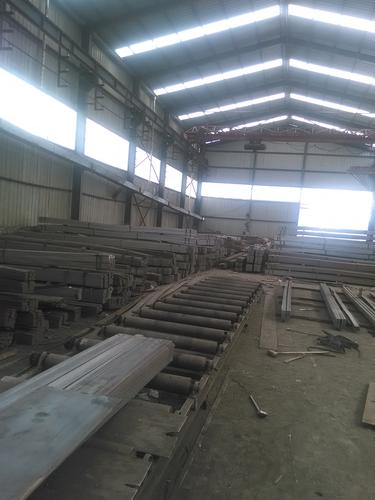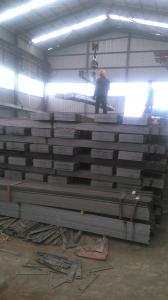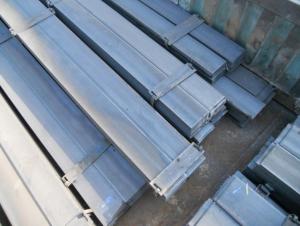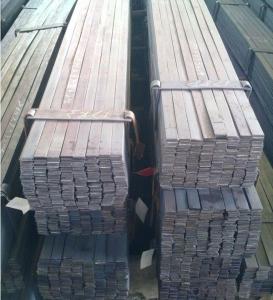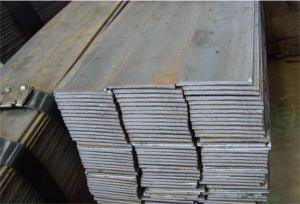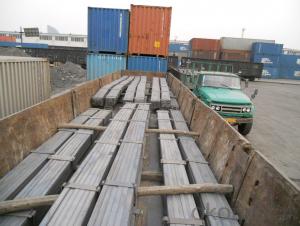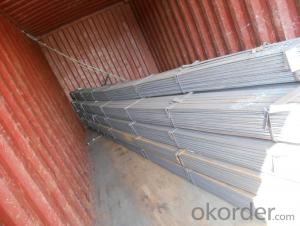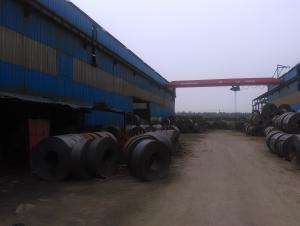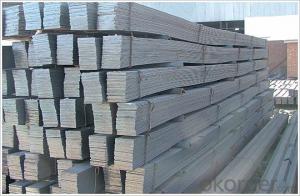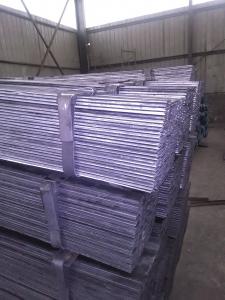S275JR Grade Flat Iron Steel Bars
- Loading Port:
- Tianjin
- Payment Terms:
- TT or LC
- Min Order Qty:
- -
- Supply Capability:
- 10000T m.t./month
OKorder Service Pledge
OKorder Financial Service
You Might Also Like
Product Description:
OKorder is offering S275JR Grade Flat Iron Steel Bars at great prices with worldwide shipping. Our supplier is a world-class manufacturer of steel, with our products utilized the world over. OKorder annually supplies products to African, South American and Asian markets. We provide quotations within 24 hours of receiving an inquiry and guarantee competitive prices.
Product Applications:
S275JR Grade Flat Iron Steel Bars are ideal for structural applications and are widely used in the construction of buildings and bridges, and the manufacturing, petrochemical, and transportation industries.
Product Advantages:
OKorder's S275JR Grade Flat Iron Steel Bars are durable, strong, and wide variety of sizes.
Main Product Features:
· Premium quality
· Prompt delivery & seaworthy packing (30 days after receiving deposit)
· Can be recycled and reused
· Mill test certification
· Professional Service
· Competitive pricing
Product Specifications:
Manufacture: slited
Slitting precision (width) : 0.5 mm or less
Raw material: Q235B, Q345B, Q235-1 b
crosscutting precision (length) : 2 mm or less
Processing: the thickness of 2.0-16 mm;
Shear length: 2000 mm above
Wide degree: 15-1250 - mm;
Leveling precision: 1-2 MM square
Packaging: Export packing, nude packing, bundled
FAQ:
Q1: Why buy Materials & Equipment from OKorder.com?
A1: All products offered byOKorder.com are carefully selected from China's most reliable manufacturing enterprises. Through its ISO certifications, OKorder.com adheres to the highest standards and a commitment to supply chain safety and customer satisfaction.
Q2: How do we guarantee the quality of our products?
A2: We have established an advanced quality management system which conducts strict quality tests at every step, from raw materials to the final product. At the same time, we provide extensive follow-up service assurances as required.
Q3: How soon can we receive the product after purchase?
A3: Within three days of placing an order, we will arrange production. The normal sizes with the normal grade can be produced within one month. The specific shipping date is dependent upon international and government factors, the delivery to international main port about 45-60days..
Images:
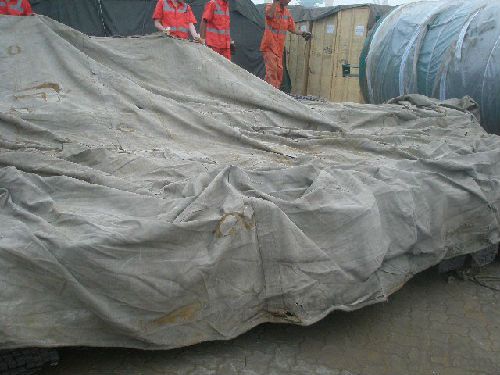
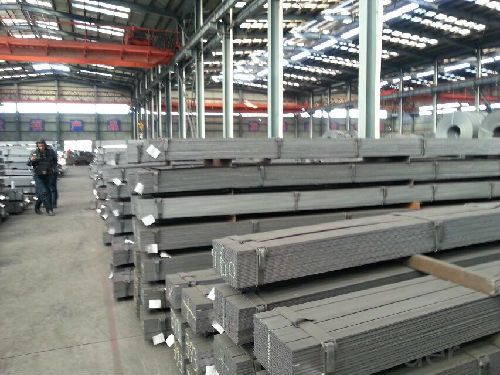
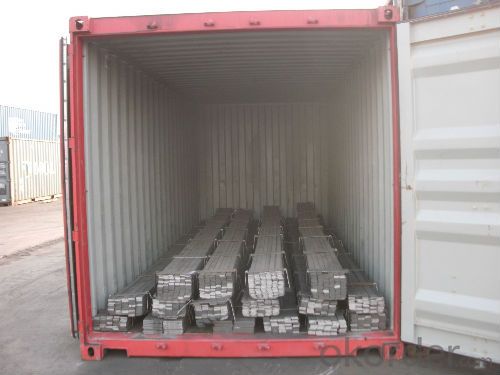
- Q: Are steel flat bars suitable for structural applications?
- Yes, steel flat bars are suitable for structural applications. They are widely used in the construction industry to provide support and stability in various structures such as buildings, bridges, and frameworks. Steel flat bars offer high strength, durability, and resistance to bending and deformation, making them an ideal choice for structural applications.
- Q: How do you remove rust from steel flat bars?
- To get rid of rust on steel flat bars, you can follow these steps: 1. Ensure your safety by wearing protective gloves and safety goggles while doing this task, in order to avoid potential harm. 2. Vigorously scrub the rusted areas using a wire brush or steel wool. This will effectively eliminate loose rust and dirt from the surface. 3. In case the rust is stubborn and cannot be removed by scrubbing alone, you have the option to apply a rust dissolver or rust remover solution. Make sure to carefully follow the instructions provided by the manufacturer and use it in a well-ventilated area. 4. Allow the rust dissolver to sit on the rusted area for the suggested duration. This will enable the solution to deeply penetrate and break down the rust. 5. Once the recommended time has elapsed, utilize the wire brush or steel wool to scrub the rusted area once again. This will assist in removing the loosened rust particles. 6. Thoroughly rinse the steel flat bars with water and then dry them using a clean cloth or towel. 7. After drying, inspect the bars to ensure the complete removal of all rust. If any rust spots remain, repeat the process until the steel surface is completely free from rust. 8. To prevent future rusting, you may choose to apply a rust inhibitor or protective coating on the steel flat bars. This will establish a barrier between the metal and moisture, thereby reducing the likelihood of rust formation. Remember, regular maintenance and keeping the steel flat bars dry will aid in preventing the recurrence of rust.
- Q: What is the carbon content in steel flat bars?
- The carbon content in steel flat bars typically ranges from 0.2% to 0.8%, depending on the specific grade and intended application of the steel.
- Q: Do steel flat bars have a specific surface finish?
- Yes, steel flat bars can have various surface finishes such as mill finish, hot rolled, cold rolled, brushed, polished, or coated depending on the desired application or aesthetic appearance.
- Q: Can steel flat bars be used for manufacturing industrial equipment?
- Indeed, the utilization of steel flat bars is feasible for the production of industrial equipment. Renowned for its robustness and longevity, steel has gained immense popularity in industrial applications. By shaping and welding steel flat bars, one can fabricate an array of components and structures for industrial equipment such as frames, supports, brackets, and even machinery parts. The flat configuration of the bar facilitates effortless handling and machining, rendering it adaptable for diverse manufacturing processes. Moreover, steel flat bars are obtainable in various grades and finishes, granting manufacturers the liberty to opt for the most appropriate material that aligns with their specific equipment requisites. In summary, steel flat bars present a trustworthy and cost-efficient alternative for the manufacturing of industrial equipment.
- Q: Can steel flat bars be used for manufacturing medical devices?
- Medical devices can indeed be manufactured using steel flat bars. Steel boasts versatility as a material, offering a broad range of properties including strength, durability, and corrosion resistance. Consequently, it finds suitability in various applications within the medical field. When it comes to crafting medical devices like surgical instruments, orthopedic implants, and prosthetics, steel flat bars can be easily manipulated and formed into the necessary shapes. Moreover, they prove efficient in terms of sterilization and cleaning, a crucial factor for upholding hygiene standards in medical settings. Nevertheless, it is worth noting that the specific grade and type of steel required may vary depending on the device and its intended purpose. It is imperative to adhere to pertinent industry standards and regulations throughout the manufacturing process.
- Q: Can steel flat bars be used for load-bearing applications?
- Yes, steel flat bars can be used for load-bearing applications. Steel is known for its high strength and durability, making it suitable for supporting heavy loads. Flat bars provide a stable and solid base for load-bearing structures, such as beams, frames, and trusses, ensuring stability and structural integrity.
- Q: What is the typical thickness range of steel flat bars?
- The specific application and industry standards play a significant role in determining the varying thickness range of steel flat bars. Generally, thicknesses of steel flat bars range from 1/8 inch to 1 inch. While certain manufacturers may provide thinner or thicker alternatives, these measurements are commonly found in the market. Additionally, it is worth mentioning that these thicknesses can also be specified in metric units, like millimeters, to cater to international requirements.
- Q: Can steel flat bars be used in the manufacturing of electrical enclosures?
- Certainly, electrical enclosures can be manufactured using steel flat bars. Steel is an incredibly versatile material that possesses numerous desirable qualities, such as strength, durability, and resistance to corrosion. These properties make steel well-suited for a wide range of applications, including the production of electrical enclosures. By utilizing steel flat bars, one can provide structural support and stability to the enclosure, ensuring that it remains intact and safeguards the electrical components housed within. Moreover, steel can be easily fabricated and tailored to meet specific design specifications, thereby enabling the creation of enclosures in various shapes and sizes. Consequently, steel flat bars are commonly employed within the electrical enclosure manufacturing industry due to their advantageous characteristics and suitability for this field.
- Q: What is the bending capacity of a steel flat bar?
- The ability of a steel flat bar to withstand bending forces without breaking or permanently deforming is known as its bending capacity. Several factors, including the steel's dimensions, thickness, composition, the applied load, and the type of bending being performed, influence the bending capacity. Steel flat bars generally have a high bending capacity due to their inherent strength and durability. To determine the specific bending capacity of a steel flat bar, engineers can calculate the maximum bending moment it can withstand before failure occurs. This calculation involves using engineering formulas and principles like the moment of inertia and the steel's yield strength. It should be noted that the bending capacity of a steel flat bar can vary depending on its grade or alloy. Different grades of steel have distinct mechanical properties, such as tensile strength and yield strength, which directly affect their bending capacity. Therefore, considering the specific grade and composition of the steel flat bar is crucial when assessing its bending capacity. Furthermore, the shape and dimensions of the steel flat bar also significantly impact its bending capacity. Wider and thicker flat bars generally have higher bending capacities compared to narrower and thinner ones. This is because the increased cross-sectional area provides more resistance against bending forces. In conclusion, the bending capacity of a steel flat bar is influenced by factors like the grade of steel, dimensions, and applied load. To accurately determine the bending capacity, consulting engineering references or professionals who can perform calculations based on the specific properties of the steel flat bar is recommended.
Send your message to us
S275JR Grade Flat Iron Steel Bars
- Loading Port:
- Tianjin
- Payment Terms:
- TT or LC
- Min Order Qty:
- -
- Supply Capability:
- 10000T m.t./month
OKorder Service Pledge
OKorder Financial Service
Similar products
Hot products
Hot Searches
Related keywords



